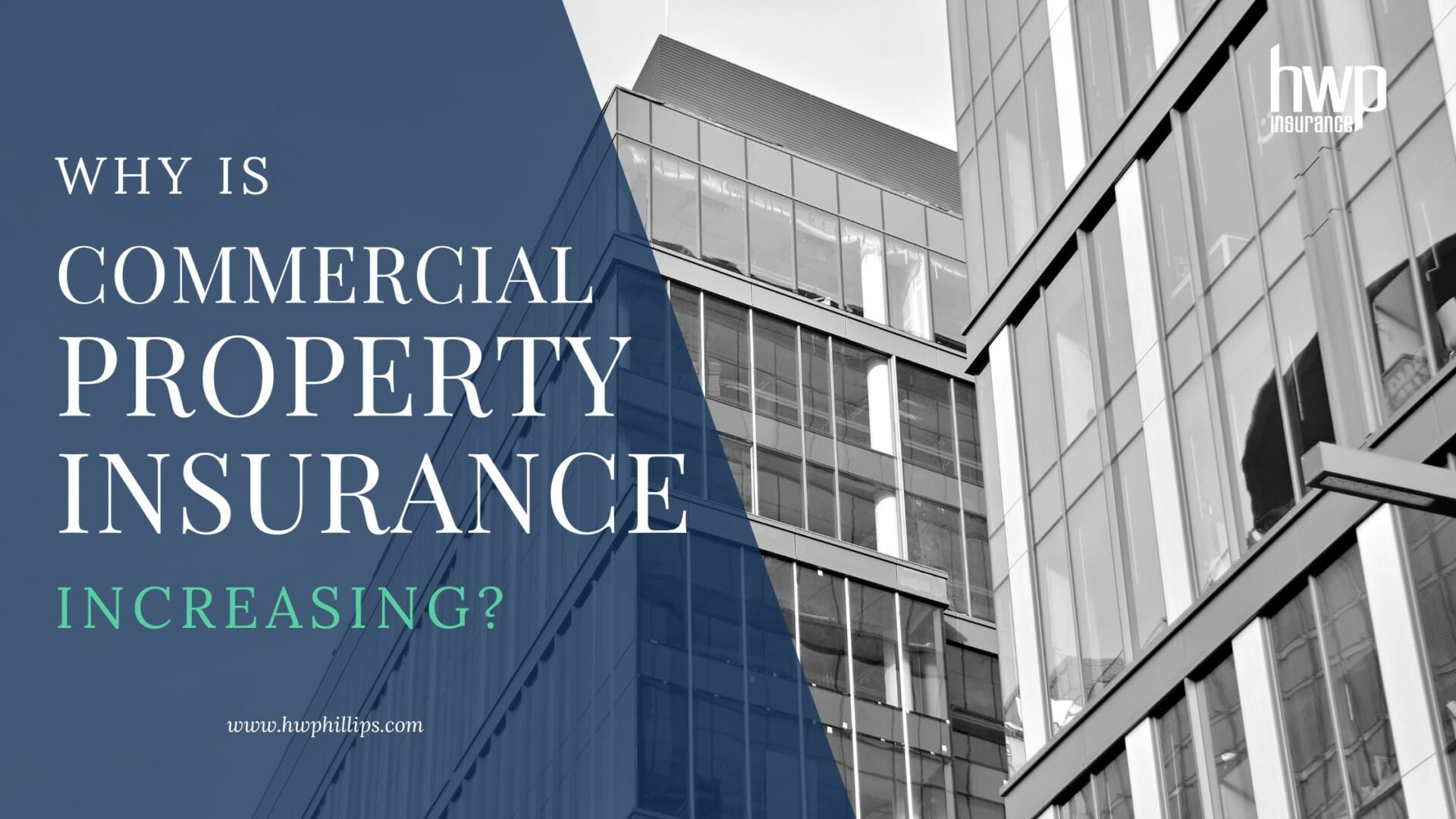It’s no secret that commercial property insurance rates have been on the rise in recent years and businesses are feeling the pressure. As these premiums climb, many business owners find themselves grappling with increased costs as they make plans for the future. It may not ease the pain, but it’s important to understand exactly why this is happening.
The 4 Major Factors Affecting the Commercial Property Insurance Market
While there are many culprits behind today’s property insurance market, there are four main factors I believe to be the most important:
- Years of Undervaluation
- Inflation and Rising Cost of Materials and Labor
- Rising Reinsurance Costs & Higher Attachment Points
- Mass Migration to Catastrophe Prone Areas
Years of Undervaluation
When an insurance company writes a property policy, they rely heavily on the customer to accurately report replacement cost values of the scheduled locations. However, the industry has been plagued by years of insufficient property valuations.
Why does this matter?
When an insurance company models expected losses, they do so assuming that the properties on their portfolio have been adequately valued to replacement cost. Their rates and expected claims models are based on receiving adequate “insurance to value calculations.” While the odds of a total loss on a property are quite low, the odds of a smaller claim are much higher.
As an example, a roof replacement on a 10,000 square foot house is going to cost much more than it would for a 3,000 square foot house. If that 10,000 square foot house has a replacement cost of $8m, but the owners are only insuring it for $5m, the insurance company is receiving much less premium for a higher level of expected losses. When you put together tens of thousands of undervalued properties across a portfolio, insurance companies simply haven’t been collecting enough money to pay out the claims they incur.
A recent study of property appraisals by Kroll showed that an estimated 90% of buildings studied were underinsured. 68% of the buildings valued from 2020 to 2021 were underinsured by 25% or more. If this study even remotely represents the true data, insurance companies have not been accurately compensated for the risk they were assuming.
This is why it’s important to make sure you’re consistently reviewing property values with your risk advisor. It’s also a good business practice to obtain periodic appraisals from a licensed professional. Of course, you want to make sure you’re properly insured in the event of a total loss. But you also don’t want to be hit with a large valuation swing when the underwriter realizes your building is underinsured. They will surely require you to raise your limit which can be an unexpected cash flow killer.
Inflation and Rising Cost of Materials and Labor
The insurance industry is not shielded from general economic factors like inflation. In fact, inflation and cost of materials and labor play a significant factor in determining property insurance premiums.
From the beginning of 2020 and the end of 2022, the Consumer Price Index rose approximately 13%. Conversely, inputs to construction (i.e. materials & labor) rose closer to 38%. While these increases have started to slow, this drastic spike seen post-pandemic has insurance carriers struggling to keep up.
Everything from minor roof repairs to ground up construction is now exponentially more expensive than in 2019. This drives up the average cost of a property insurance claim and insurance carriers are increasing their rates to keep up with the inflationary costs of the claims they pay. If they fail to do so, they run the risk of long-term underwriting losses which would negatively impact their ability to do business in the future.
Rising Reinsurance Costs & Higher Attachment Points
One of the main costs for insurance companies is their reinsurance premiums. Reinsurance is essentially insurance for insurance companies. Insurance carriers will seek to offload some of their balance sheet risk by insuring themselves from large-scale catastrophic losses like hurricanes and wildfires.
Due to years of undervaluation, a less favorable shift in population distribution and an increase in severity of weather events, most insurance companies have experienced years of property underwriting losses on a primary basis. Reinsurance companies pay out claims when catastrophe occurs. As the number of billion-dollar CAT claims continues to rise, reinsurance companies must get more rate to maintain profitability. Another way they can protect their balance sheet is by raising the reinsurance “attachment point.” This is the property limit-level where the reinsurance company agrees to start paying claims. It’s almost like a deductible in a standard insurance contract. As rates and attachment points continue to creep higher, the insurance company typically passes through much of this pricing increase to their customers, pushing premiums higher and putting pressure on the end consumer.
According to Jeffries, global property reinsurance rates are set to increase approximately 3% in 2024 which is good news considering the increase was 37% in 2023. This is always something to keep an eye on, considering we are always one bad hurricane season or bout of severe weather away from renewed rate hikes.
Mass Migration to Catastrophe Prone Areas
While climate change continues to monopolize headlines, there is much more going on behind the scenes. Mass migration to catastrophe prone areas is one of the most pivotal driving factors of the US property insurance market. It will also prove to have the longest-tailed impact.
Freddie Mac published a study in 2022 that revealed three eye opening data points:
- Net Migration to high wildfire risk areas has increased 146% since the pandemic (2020-2022).
- Net Migration to high drought risk areas has tripled since the pandemic (2020-2022).
- Net Migration in high hurricane risk areas has more than tripled since the pandemic (2020-2022).
In terms of billion-dollar natural catastrophe events in the US from 2000-2022, hurricanes & tropical storms, drought and wildfire produced the three highest average costs per event, at $27.2B, $9.2B and $7.1B respectively. While migration to coastal flooding zones has been much less drastic, it is still on the rise. Migration to earthquake zones is down significantly, however quake events are much less frequent and typically much less costly on average than the perils listed above.
Another key data point surrounds population growth in Florida and Texas in particular. Per US census estimates from 2000-2022, Florida and Texas had population growth of 39.2% and 44.0% respectively. The average state population growth in that timeframe was only 18.7%. The key point here is that Florida and Texas consistently rank among the top three states for catastrophic property losses. They are two of the very few states that have severe exposure to tornado, hail, tropical storm, flooding and wildfire.
This mass exodus of Americans to the south and west has been difficult for the insurance industry. More people in catastrophe prone areas means more claims, plain and simple. Insurance companies are struggling to keep up with this population shift which will undoubtedly cause issues with many of their catastrophe models.
How Can Business Owners Prepare for an Evolving Commercial Property Market?
Fortunately for most property owners, property rate increases have started to slow as insurance companies are finally starting to catch up to years of property underwriting losses.
As a business owner, the most important thing you can do is to control the controllable.
- Make sure you have a detailed property maintenance plan in place
- Replace and repair roof, electric, and plumbing when necessary
- Have a detailed disaster recovery and business continuity plan
- Invest in preventative measures like sprinkler systems and leak detection sensors
- Think about increasing property deductibles
- Work with a trusted risk advisor to craft a complete risk management program rooted in prevention, mitigation, avoidance and transfer
This will put you well ahead of the rest of the market.
About the Author
In his role at HWP, Jack acts as a commercial property & casualty risk advisor focusing on the Private Equity, Construction & Contracting and Commercial Real Estate sectors.
Prior to joining HWP, Jack spent 7 years at global insurer, Chubb. He most recently led the New York City- based Middle Market Private Equity Underwriting team.
Jack holds an Insurance Risk Management degree from the University of South Carolina and an MBA from New York University’s Stern School of Business. He is also a Chartered Property & Casualty Underwriter (CPCU). He is a current member of ABC Chesapeake Shores and the Association for Corporate Growth (ACG).
jcauley@hwphillips.com
Enjoying this article?






